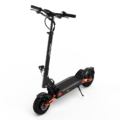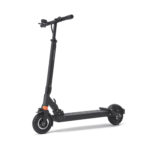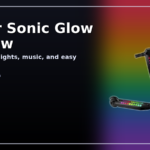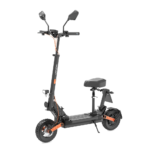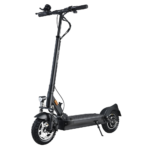- Home
- Scooters
- Electric Scooters
- JOYOR F3
JOYOR F3
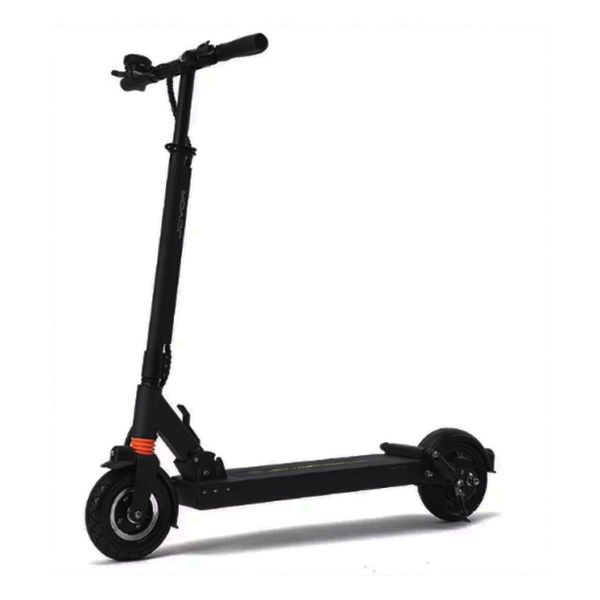

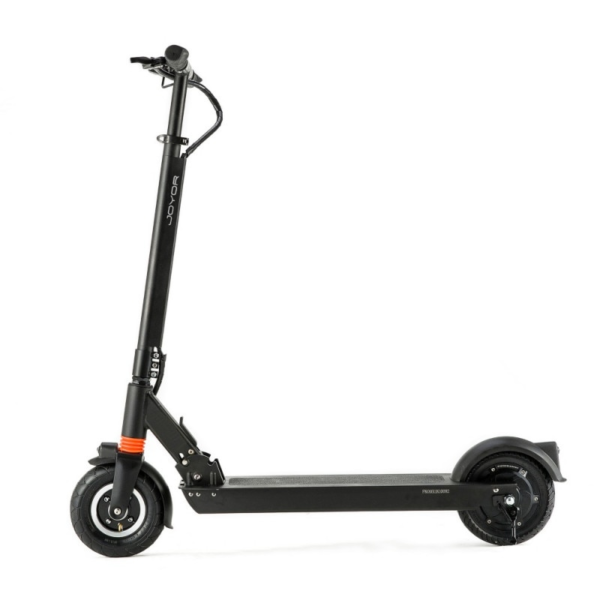
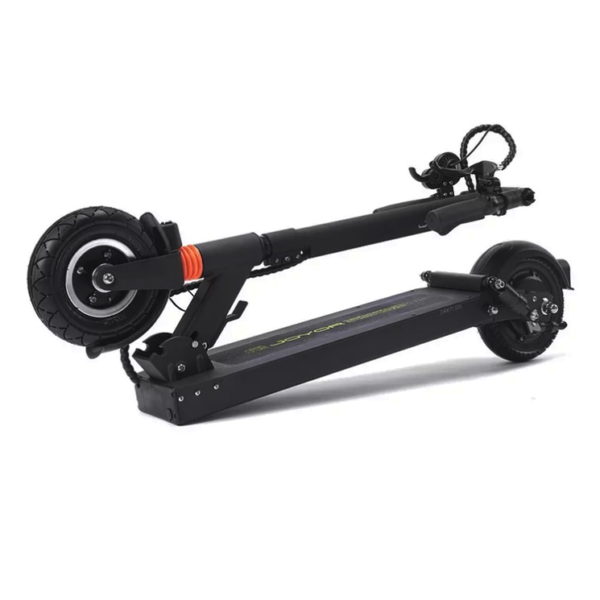
- Battery Range: 22 mi (35 km)
- Top Speed: 15.5–18.6 mph (25–30 km/h)
- Motor Power: 350 W nominal
- Weight Capacity: 220 lb (100 kg)
- Charging Time: ~5–6 h
- Scooter Weight: 28.7 lb (13.0 kg)
PROS
- Very portable; easy to carry
- Fast fold for transit/office
- Low-maintenance solid tires
- Predictable throttle and braking
- Great for short urban trips
CONS
- Shorter range than bigger JOYORs
- Firm feel on rough brick
- Limited hill performance
- Narrow deck for large shoes

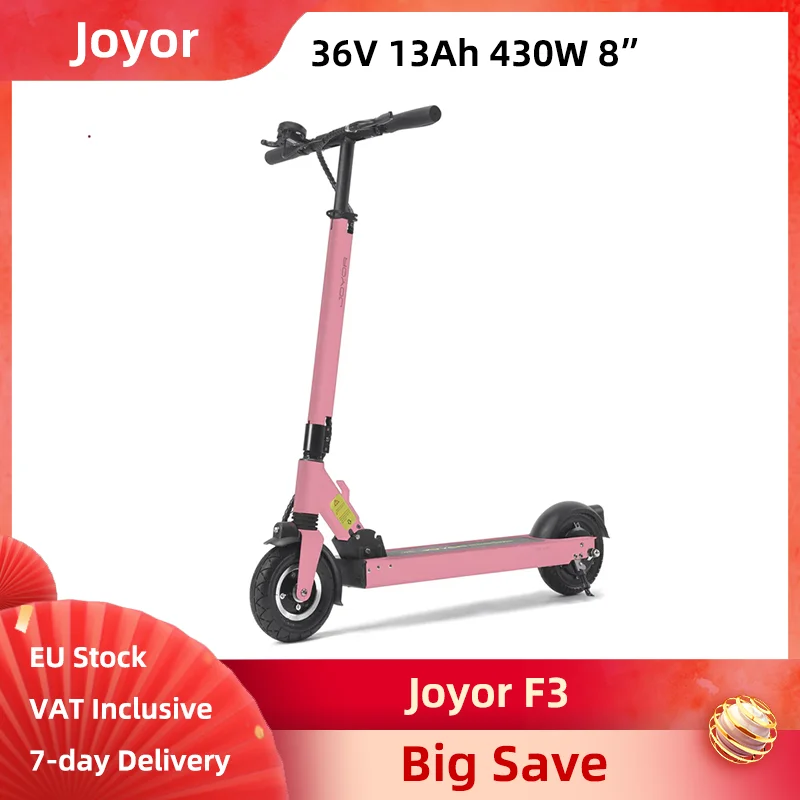
Table of contents
- What Is the JOYOR F3?
- How the JOYOR F3 Works
- Key Specifications
- Design & Build Quality
- Performance Fundamentals
- Battery, Range & Efficiency
- Ride Quality & Comfort
- Braking & Safety Features
- Portability & Daily Usability
- Maintenance & Care
- Weather & Seasonal Considerations
- JOYOR F3 vs Alternatives
- Who the JOYOR F3 Is (and Isn’t) For
- FAQs
- Glossary
The JOYOR F3 is a compact, urban-focused electric scooter designed to make short and medium commutes simple, predictable, and affordable. It favors balance over bravado. Therefore, it suits riders who want dependable range, straightforward controls, and low-stress maintenance rather than bleeding-edge performance. Because it folds quickly and carries reasonably well, the F3 also fits multi-modal routines that mix buses, rideshares, or trains.
What Is the JOYOR F3?
At its core, the JOYOR F3 is a practical commuter scooter that aims to do the daily basics—start, stop, turn, and cruise—without drama. It typically ships with a single rear hub motor, a frame that prioritizes easy folding, and a deck sized for a natural, staggered stance. You step on, thumb the throttle, and it eases into motion with a gentle ramp rather than a jolt. As a result, it feels accessible to new riders and still steady for seasoned commuters who value predictability.
Although the F3 is not built as a sport or off-road machine, it can handle typical city pavement, bike lanes, and mild neighborhood grades. The chassis is tuned for stability at urban speeds, and the steering feels neutral rather than twitchy. Moreover, the cockpit layout keeps essentials within reach, so you can focus on traffic and surface changes. You also get common commuter conveniences such as a clear display, integrated lighting, and a folding latch that does not require a complex sequence.
Finally, the JOYOR F3 occupies a useful middle ground. It is lighter and easier to store than larger performance scooters, yet more capable and comfortable than ultra-portable “last-mile only” models. Consequently, it becomes a smart pick for students, city professionals, and anyone who needs a reliable way to cover a few miles each day without a car.
How the JOYOR F3 Works
Think of the F3 like a small, efficient electric drivetrain wrapped in a commuter-friendly chassis.
Motor (rear hub): A brushless DC motor sits inside the rear wheel hub. Because it is direct-drive, there are no chains or belts to tension. When you roll on the throttle, the controller feeds current to the motor windings, which creates torque that turns the wheel. This layout keeps weight low and maintenance simple.
Controller (the “brain”): The controller meters power to the motor. It interprets your throttle input and blends in protections that limit current and heat. As a result, acceleration feels progressive rather than snappy, and the scooter avoids drawing more power than the battery can safely supply.
Battery (lithium-ion pack): The battery stores energy in cells arranged to deliver the voltage and capacity the controller expects. The pack includes a battery management system (BMS) that monitors cell health, temperature, and charge level. Therefore, it helps prevent over-charge, over-discharge, and other stress events that shorten lifespan.
Throttle (thumb lever): A small hall-effect sensor reads the position of a thumb lever. You press lightly to creep forward and push farther to accelerate. Because the signal is analog, the controller can ramp power smoothly and reduce wheel spin on slick surfaces.
Brakes (mechanical with electronic assist): The F3 commonly combines a mechanical brake with electronic regenerative braking. When you pull the lever, pads create friction at the wheel while the controller also turns the motor into a generator. Consequently, the scooter slows more decisively and recovers a small amount of energy.
Altogether, the system behaves like a calm, well-mannered commuter driveline. It prioritizes smooth starts, consistent cruising, and predictable stops over raw acceleration.
Key Specifications
Note: Exact figures can vary by region and production batch. Where precise values are not publicly published, entries are described functionally so you know what to look for on your specific unit.
| Block | Highlights |
|---|---|
| General | • Urban commuter e-scooter focused on balance and ease of use • Single rear-hub motor with simple, reliable driveline • Folding stem and compact footprint for multi-modal travel |
| Performance & Power | • Smooth, progressive acceleration tuned for city speeds • Neutral steering with stable straight-line tracking • Hill competence suitable for common neighborhood grades when ridden with momentum |
| Battery, Charging & Electrical | • Lithium-ion pack with BMS protections • Standard barrel-type or proprietary charger depending on batch • Dashboard display for speed and battery • Regenerative braking assist |
| Build & Dimensions | • Aluminum frame with integrated deck mat for grip • Folding stem with latch-and-hook carry interface • Folded dimensions: compact suitcase-like footprint designed to fit under most desks and in car trunks (verify on your unit) |
| Safety & Control | • Front and rear lights with steady running mode • Side reflectors/reflective accents for visibility • Mechanical brake with electronic assist • Traction-focused tire choice for everyday roads |
| Features & Extras | • Simple ride modes and walk-friendly throttle response • Potential Cruise Control via controller logic on some batches • Kickstand and basic cable-lock pass-through points |
| Warranty & Compliance | • Region-dependent warranty terms • Compliance with typical personal-mobility standards where sold • Local riding rules vary; confirm allowed speeds and areas in your region |
Design & Build Quality
A commuter scooter lives or dies by everyday details. The JOYOR F3 pays attention to them without overcomplicating the hardware.
Frame and deck: The aluminum frame keeps weight reasonable while resisting flex at urban speeds. The deck supports a staggered stance with enough length to shift your feet through the day. Because the deck mat offers solid grip even in light mist, your shoes stay planted while you corner or brake. The underside presents clean cable routing, which reduces snag points when carrying.
Stem and latch: The folding stem locks with a direct, positive latch. You do not wrestle with multi-stage collars or odd levers. Instead, the motion is intuitive: release, fold, hook, and lift. The hinge is braced to minimize play. Therefore, you notice less fore-aft wobble when you hit expansion joints or roll off curb cuts at low angles.
Cockpit layout: The cockpit places the display near your line of sight. A thumb throttle sits where your right thumb naturally rests, and the brake lever offers a firm bite zone around the midpoint of pull. Buttons for lights and modes are reachable without shifting your grip. As a result, you can change settings at a stoplight or while coasting on a quiet path.
Fit and finish: Panels meet cleanly. Fasteners are accessible, and their heads resist stripping with proper tools. Moreover, rubber grommets protect cable entry points. The overall impression is tidy and purposeful—built to be used daily rather than babied.
Performance Fundamentals
Performance in a commuter context is less about top speed and more about consistent, confident motion through mixed traffic. The JOYOR F3 leans into that idea.
Acceleration feel: Starts are deliberate. As you push the thumb lever, the controller ramps power smoothly, which helps beginners. There is enough thrust to merge into a bike lane after a stop, yet it avoids wheel spin on rain-polished asphalt. Consequently, you get predictable launches and fewer surprises on crowded streets.
Cruising stability: Once at pace, the chassis tracks straight with minimal steering corrections. The deck height and wheelbase create a planted stance, while the stem resists shimmy at typical city speeds. Because the throttle mapping is progressive, it is easy to hold a steady pace without “surging,” even over small rises.
Hill-climb behavior (~7–10% grades): On mild neighborhood grades, the F3 holds speed best if you approach with momentum. Heavier riders will feel a gradual slowdown on sustained climbs, which is normal for a single-motor commuter. Therefore, it pays to pick a line that keeps your wheels rolling and your body weight centered over the deck. If a hill ends at an intersection, give yourself extra space to brake smoothly.
Battery, Range & Efficiency
Battery performance is where technique and conditions matter as much as hardware. The JOYOR F3 responds noticeably to rider habits and route profiles.
Rated vs real-world range: Manufacturer ratings often assume a light rider, warm temperature, flat terrain, and a modest cruising pace. Real city routes are more chaotic. Stops, hills, wind, and cooler weather all add load. Thus, most riders can expect real-world range to land below the best-case figure. Nevertheless, careful habits can narrow the gap.
Efficiency habits that help:
- Start gently. Smooth launches draw less peak current and reduce heat.
- Cruise steadily. Holding a stable pace is more efficient than constant surging.
- Plan hills. Enter climbs with momentum and avoid full-throttle attacks from a dead stop.
- Mind pressure. Proper tire inflation reduces rolling resistance and prevents pinch issues.
Charging best practices:
- Let it cool. After a hard ride, let the pack rest before charging.
- Avoid extremes. Long storage at 100% or near 0% is stressful. For downtime, leave the battery partially charged.
- Use the included charger. Third-party chargers can work but may lack proper safeguards.
- Keep connections clean. Dust or moisture at the port can cause poor contact. Cap the port when not in use.
With measured technique, the F3 delivers consistent day-to-day range. Over time, you will learn exactly how your body weight, local terrain, and temperature affect the numbers on your own commute.
Ride Quality & Comfort
Comfort keeps you riding, especially on workdays. The JOYOR F3 aims for compliance over broken pavement while keeping control inputs precise.
Tire type and feel: The F3 favors urban traction over ultra-low rolling resistance. If your unit runs pneumatic tires, maintain recommended pressure to balance cushion and steering accuracy. If your unit uses solid or honeycomb tires, enjoy the puncture resistance while remembering that solids transmit more vibration. Consequently, you will want to bend your knees slightly and let your legs act as suspension over expansion joints.
Suspension behavior: When present, light suspension hardware takes the edge off chatter at city speeds. It is not meant for curbs or potholes taken head-on. Instead, it filters the constant micro-bumps that tire you out. Because the chassis is stiff enough to hold a line, it feels settled when carving gentle S-curves around pedestrians and cones.
Ergonomics and stem flex: Stem flex is restrained at commuter pace. Under quick braking or when you weave through slow traffic, the steering remains predictable rather than floppy. Bar width supports stable control without catching elbows on crowded paths. Moreover, the deck’s rubber mat dampens vibration through your shoes, which delays fatigue on longer rides.
Braking & Safety Features
Stopping is where hardware tuning truly shows. The JOYOR F3 blends mechanical braking with electronic assist to produce a confident, linear stop.
Brake feel: The lever firms up around halfway through the pull. That is where most of the stopping power comes in. Consequently, you can trail brake into a turn without a sudden bite that unsettles the chassis. The rear wheel stays composed unless you hammer the lever on slick paint or loose gravel.
Electronic regenerative assistance: Light regen kicks in as you brake. You will feel a mild drag even before the pads fully engage. This smooths the transition into a stop, recovers a bit of energy, and reduces pad wear. However, always assume mechanical braking is your primary stopping power and keep it well adjusted.
Lighting and visibility: Built-in lights cover forward and rear visibility for early twilight and city nights. Still, many riders add a clip-on helmet light so drivers can better gauge distance and motion. Reflective deck edges or ankle bands also help side visibility at intersections.
Water and dust resistance: The F3 is built for everyday weather, not submersion. Puddles after a short rain are usually manageable with conservative speed and wide arcs. Do not pressure-wash the scooter. After wet rides, dry the deck mat, wipe exposed metal, and store the scooter in a ventilated space.
Portability & Daily Usability
A commuter scooter should be easy to live with. The JOYOR F3 keeps the daily routine smooth.
Weight and carrying: You can carry the F3 up a flight of stairs with one hand on the stem and the other stabilizing the deck. Balance is slightly rear-biased due to the hub motor, yet the center of mass sits near your lead hand so the scooter does not pitch.
Fold mechanism and storage: The latch is direct. Fold, hook, and it stays shut for short carries. Under a desk, the scooter takes a small footprint, and it stands tidy near a doorway. Because the folded package is compact, it rides well in a car trunk or behind a couch in a studio apartment.
Security habits: Use a quality lock around a solid anchor when you must park outside. Run the shackle or cable through a hardened point and, if possible, a wheel. Remove easy-grab accessories from the bars. Additionally, set a routine: lock, check, and take a quick photo so you remember the spot.
Maintenance & Care
Simple maintenance pays off. The JOYOR F3 rewards a light, regular schedule more than occasional heavy overhauls.
Before each ride (30–60 seconds):
- Quick brake lever squeeze to confirm bite.
- Tire check for cuts, embedded debris, and pressure.
- Stem latch closed and secondary retainer engaged.
- Lights on and display reading as expected.
Weekly (or every ~50–60 miles, whichever comes first):
- Inspect brake pad wear and cable tension; adjust for a firm mid-pull bite.
- Check stem bolts, axle nuts, and fender screws; snug to spec with proper tools.
- Clean deck mat with mild soap and a damp cloth; dry fully before storage.
- Wipe dust from the charging port and close the cap securely.
Monthly (or every ~200–250 miles):
- Deeper fastener audit with thread treatment where appropriate.
- Lubricate pivot points on the folding mechanism lightly, then wipe excess.
- Inspect tire tread depth and sidewalls; rotate or replace as needed.
- Review battery behavior: note any sudden drops or unusual heat.
Firmware/app habits (if available):
- Update only when the scooter is fully charged and stationary.
- After updates, test brakes and throttle in a safe area before returning to traffic.
Storage:
- For breaks longer than a week, store the battery partially charged in a cool, dry place.
- Avoid leaving the scooter in a hot car, especially in direct sun.
Weather & Seasonal Considerations
Weather shifts change traction and range. Plan accordingly, and the JOYOR F3 will remain dependable year-round.
Rain: Painted lines, metal plates, wet leaves, and brick crosswalks become slick. Therefore, reduce speed early and brake upright. Keep your weight neutral and your knees soft. After rain, dry the scooter and check the brake hardware for surface rust.
Cold: Lithium-ion batteries lose output in low temperatures. Expect less range and slightly dulled acceleration. Pre-warm the scooter indoors when possible and ride with smoother throttle inputs. Charge at room temperature rather than in a freezing garage.
Heat: High heat increases battery stress. Park in the shade. Avoid charging immediately after a hard ride. If the deck feels unusually warm, let the scooter rest before plugging it in.
Wind: Strong headwinds raise demand; tailwinds do the opposite. In crosswinds, widen your stance and use gentle counter-steer to hold your line.
JOYOR F3 vs Alternatives
Scooters fall into broad families. The JOYOR F3 slots into the commuter class with a bias toward practicality.
- Compared to ultra-portables: The F3 rides more confidently, offers a steadier deck, and feels less twitchy at pace. However, ultra-portables can be lighter for walk-heavy routines.
- Compared to mid-range all-rounders: It is simpler and often lighter, which helps in apartments and transit. Yet, mid-range models may climb steep hills faster and carry larger riders with more headroom.
- Compared to performance scooters: The F3 is far easier to carry and store, while performance machines accelerate harder and brake with more authority. If you rarely exceed city speeds, the F3’s calmer manners can be a better match.
- Compared to off-road builds: The F3 is not designed for trails or curbs. Its strengths live on streets, bike lanes, and predictable surfaces.
Therefore, choose based on route shape, storage constraints, and how often you carry the scooter rather than raw specification sheets.
For riders exploring a higher-spec sibling with stronger suspension and headroom, see the JOYOR S10-S-Z Electric Scooter Review for context.
Who the JOYOR F3 Is (and Isn’t) For
Great for:
- Daily city commutes under a handful of miles each way with moderate hills.
- Students moving between classes and housing with limited storage.
- Multi-modal travelers who combine scooter rides with buses, trains, or rideshares.
- New riders who want a forgiving throttle map and predictable brakes.
- Apartment dwellers who need a small folded footprint and manageable weight.
Not ideal for:
- Frequent high-speed road sections where larger brakes and dual motors shine.
- Regular off-road use on gravel, roots, or curbs.
- Very steep neighborhoods that demand sustained hill power beyond a single hub motor’s comfort zone.
- Heavy cargo hauling or towing; the deck and chassis are tuned for people, not loads.
In short, match the tool to the job. If your life is mostly city blocks, crosswalks, and elevators, the JOYOR F3 fits neatly.
FAQs
1) Is the JOYOR F3 suitable for beginners?
Yes. The smooth throttle ramp, stable steering, and predictable brake feel make it friendly for first-time riders. Start in a safe area, practice stops, and build confidence before entering traffic.
2) How far can I ride on a single charge?
Real-world range depends on rider weight, hills, surfaces, speed, and temperature. Manufacturer ratings assume ideal conditions. Plan your route with a buffer until you learn how your F3 behaves on your commute.
3) Can I ride the F3 in the rain?
Light rain and damp pavement are manageable with caution. Slow down, brake upright, avoid puddles when you can, and dry the scooter after rides. Do not submerge or pressure-wash it.
4) Does the JOYOR F3 have Cruise Control?
Some batches provide cruise behavior through the controller when you hold a steady throttle for a few seconds. Verify on your unit. Regardless, keep a finger near the brake to disengage immediately if needed.
5) What tire pressure should I run?
Follow the sidewall range if your F3 uses pneumatic tires. Because pressure affects both comfort and range, check it weekly. If you have solid tires, inspect them for damage and ride with bent knees over rough patches.
6) What maintenance does the F3 need?
Regular brake adjustments, tire inspection, fastener checks, and a clean charging port. A quick 60-second pre-ride routine, plus weekly and monthly touch-ups, keeps the scooter tight and safe.
7) Where can I read a concise JOYOR F3 overview?
You’re reading one now. This guide distills how the scooter behaves, what to expect in daily use, and which habits extend range and longevity.
Glossary
- Ah (Amp-hours): A measure of battery capacity. Higher Ah means more stored charge.
- Wh (Watt-hours): Energy capacity (volts × amp-hours). Useful for comparing packs.
- Controller: The electronic unit that meters power from the battery to the motor.
- Regen (Regenerative Braking): The motor acts as a generator to slow the scooter and recover a little energy.
- BMS (Battery Management System): Circuitry that protects cells from over-charge, over-discharge, and overheating.
- Stem Flex: The small amount of movement you feel at the handlebar and stem under load.
- IP Rating: Ingress Protection rating that indicates resistance to water and dust.
- Thumb Throttle: A lever you press with your thumb to command motor power.
- Hub Motor: A motor integrated into the wheel hub; quiet and low-maintenance.
- Rolling Resistance: Energy lost to tire deformation as it rolls; lower is more efficient.
- Trail/Steering Geometry: Dimensions that influence how stable or quick the steering feels.
- Brake Bite: The point in lever travel where the brake begins to produce strong deceleration.
- Cut-off (Battery): A safety stop when the pack voltage drops too low.
- C-Rate (Charging): The rate at which you charge relative to capacity; lower rates are gentler.
- Thermal Throttling: Automatic power reduction when the controller or motor gets too hot.
Specifications
General
| Model The Model specifies the exact version or name of the scooter. It helps identify its unique design, features, and specifications within the manufacturer’s product line. Knowing the model makes it easier to compare options, find compatible accessories, or look up support information. | F3 |
| Brand The Brand identifies the manufacturer or company that designs and produces the scooter. A trusted brand is a sign of quality, reliability, and good customer support. Well-known brands often have higher standards for safety, performance, and after-sales service, giving you more confidence in your purchase. | JOYOR |
| Release Date The Release Date indicates when the scooter model was officially launched on the market. This helps you know how current the design, technology, and features are. A newer release date often means updated components, improved performance, and the latest safety or smart features. | 17 November 2025 |
| Recommended Age Recommended Age indicates the minimum age range that the scooter is designed for, based on safety, size, and ease of use. Following the recommended age helps ensure that riders can handle the scooter’s speed, weight, and controls comfortably and safely. Always check local laws and use protective gear, especially for younger riders. | Recommended 14+ |
Performance & Power
| Motor Power (Wattage) What it means: The motor power, measured in watts (W), shows how strong the scooter’s electric motor is. Why it matters: Higher wattage usually means better acceleration, more torque, and improved performance on hills or rough terrain. For example, a 250W motor is good for flat city roads and light riders, while a 500W or 1000W motor provides more power for faster speeds or climbing steep inclines. | 350 W nominal |
| Top Speed The Top Speed indicates the maximum speed that the scooter can reach under optimal conditions. It’s usually measured on level ground with a fully charged battery and an average rider weight. A higher top speed allows you to travel longer distances faster, but always ensure you ride within legal speed limits and your personal comfort zone for safety. | 25–30 km/h (region) |
| Battery Capacity Battery Capacity refers to the total amount of energy the scooter’s battery can store, usually measured in ampere-hours (Ah) or watt-hours (Wh). A higher battery capacity means you can ride longer distances on a single charge, reducing the need for frequent recharging. Keep in mind that actual range can vary depending on rider weight, terrain, speed, and weather conditions. | 36 V 10.4 Ah |
| Estimated Range per Charge The Estimated Range per Charge indicates the average distance the scooter can travel on a single full battery charge. This range is calculated under optimal conditions, such as flat terrain, moderate speed, and average rider weight. Real-world range may vary depending on riding style, terrain, weather, and load. A longer range means fewer recharges and greater freedom for longer trips. | Up to 35 km |
| Hill Climb Ability Hill Climb Ability describes the maximum incline or slope that the scooter can handle while maintaining stable performance. It’s typically expressed as a percentage or in degrees. A higher hill climb rating means the scooter can tackle steeper hills without losing too much speed or power. Actual climbing performance may vary based on rider weight, battery charge, and terrain conditions. | Up to 12° grades |
| Drive System The Drive System refers to how power from the motor is delivered to the wheels. Electric scooters typically use either a hub motor (directly integrated into the wheel) or a chain/belt drive system. A high-quality drive system ensures smooth acceleration, efficient power transfer, and low maintenance. The choice of drive system affects performance, noise level, and overall ride experience. | Rear hub motor (RWD) |
Charging & Electrical
| Charging Time Charging Time indicates how long it takes to fully recharge the scooter’s battery from empty to 100% using the standard charger provided. Faster charging means less downtime and more time on the road. Actual charging time may vary slightly depending on battery capacity, charger output, and environmental conditions. | Approx. 5–6 hours |
| Battery Type Battery Type refers to the specific technology used in the scooter’s battery, which affects performance, lifespan, weight, and charging time. Most modern electric scooters use high-quality lithium-ion (Li-ion) batteries because they offer a good balance of energy density, durability, and low maintenance. A reliable battery type ensures consistent power delivery and longer riding ranges. | Li-ion with Smart BMS |
| Removable Battery A Removable Battery means the battery pack can be easily detached from the scooter for convenient charging and replacement. This feature allows you to charge the battery separately, swap it with a spare for extended range, or securely store it indoors in extreme weather. Removable batteries add flexibility and make it easier to keep your scooter powered up wherever you are. | No external fast charge |
| Regenerative Braking Regenerative Braking is an energy-saving feature that converts some of the energy normally lost during braking back into battery power. When you slow down or brake, the motor works in reverse to generate electricity, which helps extend the scooter’s range and improves overall efficiency. This system also reduces wear on traditional brake components, leading to lower maintenance over time. | Front e-brake + rear drum |
| Lighting Lighting refers to the built-in front and rear lights that enhance visibility and safety when riding in low-light conditions or at night. Good lighting helps you see the road ahead and ensures that other road users can see you. Many scooters include LED headlights, taillights, and sometimes brake lights or side reflectors for added safety and compliance with local traffic regulations. | Headlight + tail/brake + reflectors |
Build & Dimensions
| Scooter Weight Scooter Weight refers to the total weight of the scooter when fully assembled, including the battery. This affects how easy it is to carry, lift, and store the scooter when not in use. A lighter scooter is more portable and convenient for commuting, especially if you need to carry it upstairs or onto public transport. Keep in mind that a sturdy frame and quality components may add to the weight but also contribute to better durability and ride stability. | 28.7 lb (13.0 kg) |
| Maximum Rider Weight Maximum Rider Weight indicates the highest rider weight that the scooter is designed to safely support while maintaining optimal performance and stability. Staying within this limit helps ensure reliable acceleration, braking, and climbing ability, and it protects the frame, suspension, and motor from excessive strain. Exceeding the recommended limit may reduce performance and increase wear on components. | 220 lb (100 kg) |
| Deck Size Deck Size refers to the dimensions of the scooter’s standing platform. A wider and longer deck provides more foot space, allowing you to stand comfortably and adjust your stance while riding. A well-sized deck improves balance and stability, especially on longer rides or at higher speeds. Compact decks, on the other hand, help keep the scooter lightweight and portable. | Slim deck; compact stance |
| Handlebar Height Handlebar Height refers to the distance from the deck to the handlebars, which affects your riding posture and comfort. An appropriate handlebar height helps you maintain good balance, reduces strain on your back and arms, and makes steering more comfortable. Some scooters have adjustable handlebars to fit riders of different heights, while others have a fixed height for a streamlined design. | Adult fixed bar height |
| Folding Mechanism The Folding Mechanism describes how easily and securely the scooter can be folded for carrying and storage. A well-designed folding system lets you quickly collapse the scooter into a compact size, making it convenient to transport on public transit, store under a desk, or fit into a car trunk. Look for sturdy latches and safety locks to ensure the scooter stays firmly in place when folded or unfolded. | Quick folding latch |
| Dimensions Folded Dimensions indicate the size of the scooter when it’s fully folded. This measurement shows how much space the scooter will take up when stored or carried, making it easier to check if it will fit in your car trunk, under a desk, or in a closet. Compact folded dimensions are ideal for commuters who need to bring their scooter on public transport or store it in tight spaces. | 41.7 × 17.3 × 18.5 in (folded) |
| Material Material refers to the primary construction materials used for the scooter’s frame and key components. High-quality materials like aircraft-grade aluminum, reinforced steel, or durable composites provide strength, stability, and a lighter overall weight. A sturdy material ensures the scooter can handle daily wear and tear while maintaining safety and performance. | Aluminum alloy |
Safety & Control
| Brake Type(s) Brake Type(s) describe the braking systems the scooter uses to help you slow down or stop safely. Common brake types include mechanical brakes (like drum or disc brakes), electronic brakes, and foot brakes. Many scooters combine multiple braking systems for added safety and shorter stopping distances. The type and quality of brakes affect your control, especially when riding at higher speeds or on slopes. | Front e-brake + rear drum |
| Suspension Suspension refers to the system that absorbs shocks and vibrations while riding, providing a smoother and more comfortable ride over uneven or rough surfaces. Scooters may have front suspension, rear suspension, or dual suspension for better shock absorption and stability. Good suspension helps reduce rider fatigue and improves control, especially when riding on bumpy roads or off-road paths. | None |
| Tire Type Tire Type refers to the kind of tires the scooter uses, which directly affects ride comfort, traction, and maintenance. Common types include solid (airless) tires, pneumatic (air-filled) tires, or hybrid options. Pneumatic tires offer better shock absorption and a smoother ride on rough surfaces, while solid tires are puncture-proof and require less upkeep. The right tire type helps ensure safe handling and a comfortable ride in different conditions. | Honeycomb solid |
| Tire Size Tire Size indicates the diameter and width of the scooter’s tires, which affect ride comfort, stability, and how well the scooter handles different terrains. Larger tires generally offer better shock absorption and a smoother ride over bumps and rough surfaces, while smaller tires keep the scooter lighter and more portable. Choosing the right tire size helps ensure a balance between agility and comfort. | 8.5–9 inch class |
| Kickstand The Kickstand is a built-in stand that allows you to park your scooter upright when it’s not in use. A sturdy kickstand keeps the scooter stable and prevents it from tipping over, protecting it from scratches and damage. It also makes storing and accessing your scooter more convenient, whether you’re at home, work, or on the go. | Side kickstand |
| Water Resistance Rating Water Resistance Rating indicates how well the scooter is protected against water and moisture, usually shown as an IP (Ingress Protection) rating. This rating helps you understand whether the scooter can handle light rain, splashes, or wet roads without damage. While most scooters are not fully waterproof, a good water resistance rating adds peace of mind when riding in changing weather conditions. Always avoid deep puddles or submerging the scooter to protect its electrical components. | IPX4 body |
Features & Extras
| Display/Console The Display (or Console) shows important real-time information about your ride, helping you monitor your scooter’s status at a glance. Typical displays show speed, battery level, distance traveled, and riding mode. Some models also include additional features like Bluetooth connectivity, app integration, or backlighting for better visibility at night. A clear and easy-to-read display enhances safety and convenience on every trip. | LED dashboard |
| Ride Modes Ride Modes refer to the different speed and power settings you can choose to match your riding style or road conditions. Common modes include eco for maximum range and energy efficiency, standard for everyday balance, and sport or turbo for higher speed and stronger acceleration. Switching between ride modes allows you to customize performance, conserve battery, and ride safely in various environments. | Eco, Drive |
| Smart App Connectivity Smart App Connectivity lets you pair your scooter with a dedicated mobile app via Bluetooth. Using the app, you can monitor real-time ride stats like speed, battery level, and range, adjust settings such as ride modes or cruise control, lock the scooter for added security, and sometimes receive firmware updates. This feature adds convenience and allows you to personalize your riding experience right from your smartphone. | App-free basic operation |
| Anti-Theft System The Anti-Theft System helps protect your scooter from unauthorized use or theft. This feature can include built-in alarms, electronic motor locks, GPS tracking, or remote locking through a mobile app. A good anti-theft system provides peace of mind when parking your scooter in public spaces, adding an extra layer of security to safeguard your investment. | N/A |
| Cruise Control Cruise Control allows you to maintain a steady speed without continuously holding the throttle. This feature makes longer rides more comfortable by reducing hand fatigue and providing a smoother, more relaxed riding experience — especially on flat, open roads or bike lanes. For safety, cruise control can usually be easily activated or deactivated while riding. | Yes (cruise control) |
| Accessories Included Accessories Included lists the additional items that come with the scooter to enhance your riding experience and convenience. Common accessories may include a charger, kickstand, bell, lights, phone holder, or carrying strap. These extras add value by making your scooter safer, easier to use, and ready to ride straight out of the box. | Bell, reflectors, charger |
Warranty & Compliance
| Warranty Period The Warranty Period indicates how long the manufacturer guarantees the scooter against defects in materials and workmanship under normal use. A good warranty provides peace of mind, showing the brand’s confidence in its product quality. Always check what parts are covered, such as the frame, battery, and motor, and follow the maintenance guidelines to keep your warranty valid. | 12 months typical |
| Certifications Certifications confirm that the scooter meets specific safety, quality, and environmental standards set by recognized organizations or regulatory bodies. Common certifications may include CE, RoHS, UL, or other local compliance marks, depending on your region. These certifications ensure that the scooter is manufactured to high standards and is safe and legal to use in your country. | Local micromobility compliance |
Price Comparison





